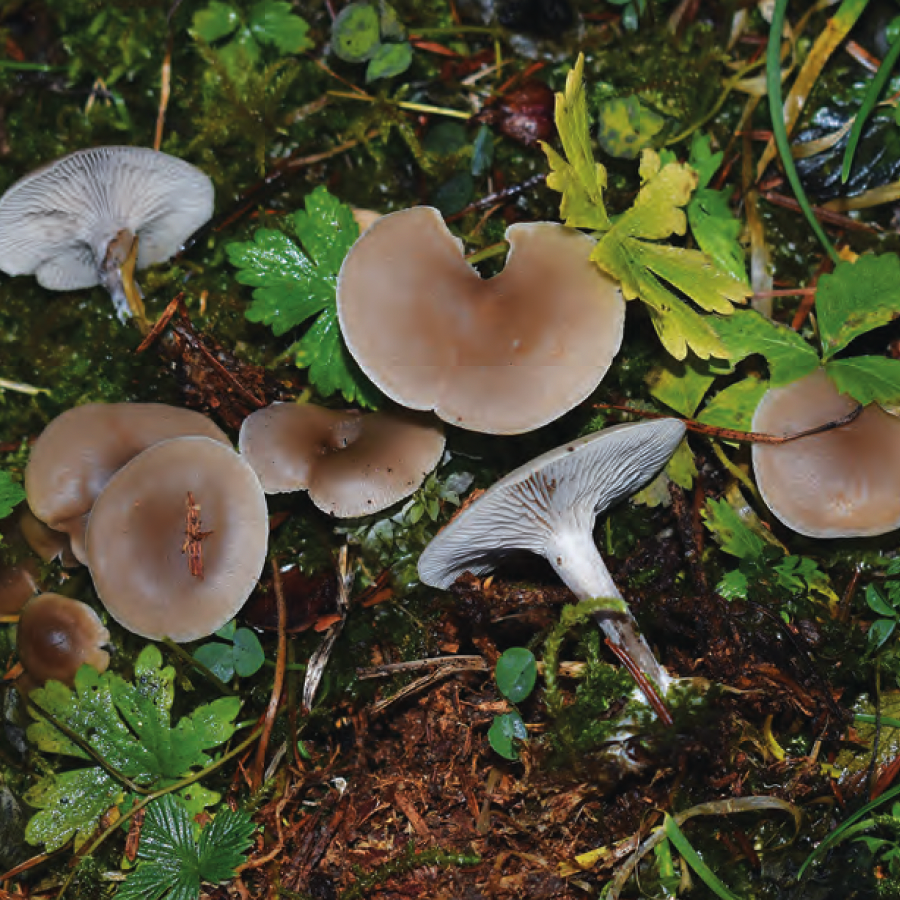The fungi of the “Val Masino - Bagni” forest (province of Sondrio, Lombardy, Italy), with mycofloral, phenological and ecological remarks.

All claims expressed in this article are solely those of the authors and do not necessarily represent those of their affiliated organizations, or those of the publisher, the editors and the reviewers. Any product that may be evaluated in this article or claim that may be made by its manufacturer is not guaranteed or endorsed by the publisher.
Authors
The results of the three-year survey (2019−2021) of the macromycetes of the “Val Masino - Bagni” Regional Forest, located in the eastern Rhaetian Alps, Bernina Alps subsection, are presented. The geographical, geological, geomorphological, pedological and vegetational characteristics are briefly illustrated. The local weather-climatic conditions were processed on the basis of daily temperature, precipitation and relative humidity data measured in the three-year period 2019-2021 from the nearest ARPA station (Val Masino - San Martino). The survey area, between 1100 and about 1300 m a.s.l., was divided into 11 homogeneous stations for geographical and vegetational characteristics, of which one in beech forest (Habitat EUNIS T18 - Fagus forest on acid soils), four in spruce forests (Habitat EUNIS T31 - Temperate mountain Picea forest), one in pastured clearing (Habitat EUNIS R57 - Herbaceous forest clearing vegetation), four in secondary pastures (Habitat EUNIS R21 - Mesic permanent pasture of lowlands and mountains) and one in anthropized area (dirt road, flowerbeds, parking lots). The survey led to the identification of 354 ma-cromycetes, to which a further 43 must be added, found in previous years by the members of the Mycological Group Cantù and Como. In total 397 macromycetes are currently known for the investigated area, of which 94.4% belong to the phylum Basidiomycota (375 species/varieties, 155 genera) and 5.6% to the phylum Ascomycota (22 species, 17 genera). 57 species/varieties (54 Basidiomycota and 3 Ascomycota) are reported for the first time for the province of Sondrio: Aleurodiscus amorphus, Ama-nita brunneofuliginea, A. spadicea, Amylostereum chailletii, Buchwaldoboletus lignicola, Connopus acervatus, Corticium meridioroseum, Cortinarius cinnabarinus, C. livido-ochraceus, C. torvus, Cylindrobasi-dium evolvens, Cystoderma jasonis, Cystodermella terryi, Faerberia carbonaria, Ganoderma resinaceum, Gymnopus hariolorum, Helvella bicolor, Homophron cernuum, Hydnotrya cerebriformis, Hygrophorocybe nivea, Hygrophorus unicolor, Hypholoma epixanthum, Lachnellula subtilissima, Lactarius albocarneus, L. subdulcis, Laxitextum bicolor, Lentinus substrictus, Lycoperdon echinatum, Mycena fagetorum, M. pelianthina, M. renati, Neoantrodia serialis, Neofavolus suavissimus, Panaeolus olivaceus, Panellus violaceofulvus, Phlebiopsis gigantea, Phylloporus pelletieri, Picipes melanopus, Pluteus salicinus, Polyporus tuberaster, Porostereum spadiceum, Postia tephroleuca, Psathyrella fagetophila, P. spintrigeroides, P. tephrophylla, Pycnoporellus fulgens, Ramaria stricta, Rhizocybe pruinosa, Rigidoporus sanguinolentus, Russula cavipes, R. farinipes, R. olivacea, Steccherinum fimbriatum, Stereum gausapatum, Tricholoma album, T. ustale, Xerocomellus pruinatus. A comparison with the Red List of threatened macromycetes in Switzerland shows that 31 species considered threatened were found in the survey area, equal to 7.8% of the total, of which one (Mycena fagetorum) belonging to the CR category (Critically Endangered), 3 to category EN (Endangered), 18 to category VU (Vulnerable) and 9 to category NT (Nearly Threatened). The phenological analysis, conducted excluding the 50 li-gnicolous taxa (Polyporaceae s.l. and Corticiaceae s.l.) whose fruiting bodies can persist in the environment from a few months to a few years and therefore alter the results, reveals that the month with the greatest mycological diversity is September with 237 taxa out of 347, equal to 68.3%, followed by October (145, 41.8%), July (99, 28.4%) and August (94, 26.9%). According to the season of discovery, the exclusively autumnal macromycetes (September, October and November) are 170, the exclusively estival ones (June, July and August) are 44 and those exclusively vernal (March, April and May) are 11. The evaluation of the ecosystemic health status of the forest habitats of the investigated area (stations 1−5), based on the spectra of trophic groups (biotrophic, ectomycorrhizal, mycoparasite, parasite, saprotrophic, sapro-ectomycorrhizal and sapro-parasite), shows that only station 4 (outside the borders of the Regional Forest) presents a percentage value of ectomycorrhizal species indicating a phase of acute disturbance (36.9%), while all the others show a good state of health with values between 49.6% (station 1) and 54% (station 5). In the investigated area, some species indicating degradation processes already underway (Megacollybia platyphylla, Clitocybe phaeophthalma and Apioperdon pyriforme) and future (Mycena amicta, M. galericulata, M. pelianthina and M. pura) were found. In addition, the comparison of the percentage of ectomycorrhizal macromycetes surveyed within the two fenced areas located within the station 2 (73.8%) with that of the station 2 as a whole (51.2%) shows how the anthropic disturbance, resulting from the high tourist attendance (many thousands of people every year, mostly concentrated in the months from May to September), has consequences not only on the vegetation, but also on the growth and distribution of the mycoflora. Finally, lignicolous, beech forest and grassland habitats ma-cromycetes are taken into consideration, with some observations on taxa considered of particular interest or rarity. In particular, the mycoflora of the beech forest is analyzed in detail, given that this habitat constitutes the most valuable element of the investigated area. Of the 354 taxa surveyed in the three-year period 2019−2021, those that, on the basis of the literature consulted, can be considered more or less closely associated with beech are 40, of which 13 exclusive and 27 preferential.
Supporting Agencies
Società Italiana di Scienze Naturali, Museo di Storia Naturale di MilanoHow to Cite

This work is licensed under a Creative Commons Attribution-NonCommercial 4.0 International License.







